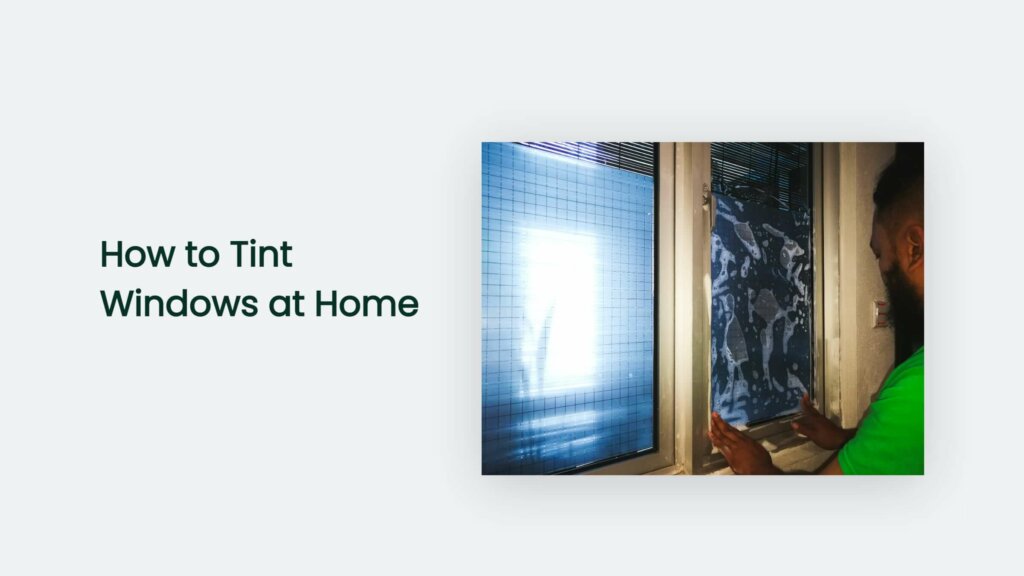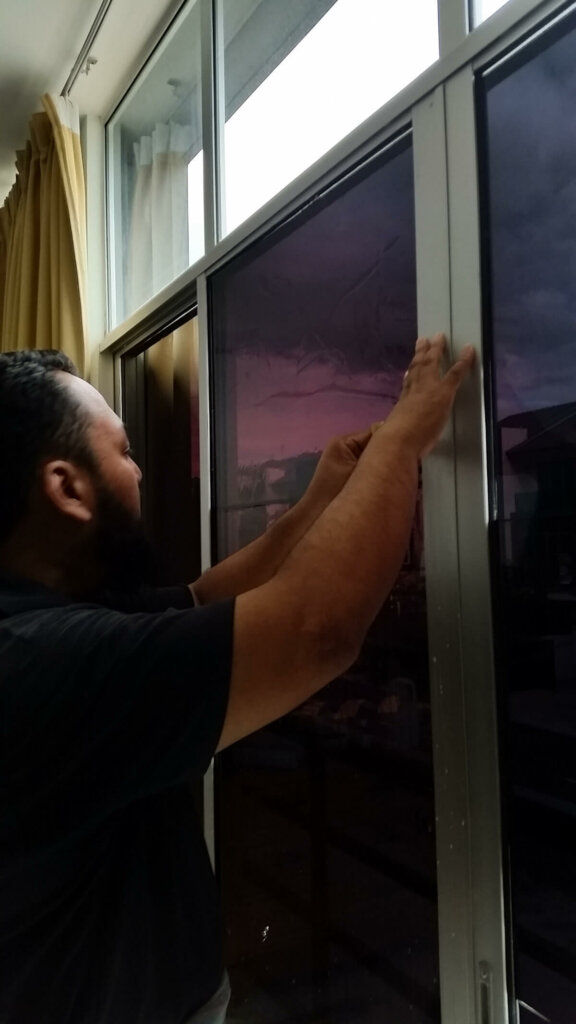Window tinting is a great way to improve the look of your home and reduce glare and UV damage.
They are also a great way to improve energy efficiency and privacy.
However, there are dozens of methods on How to Tint Windows at Home.
In this article, we’ll be featuring the top 5 best ways you can tint windows at home. (Some may be super easy, and some may be, like getting WiFi in the desert, really hard.)

Tinting Your Home Windows: Pros
Tinting your home windows comes with a multitude of benefits. Not only does it protect your furniture and carpets from fading in the sun, but it also helps to keep your home cooler in the summer months.
Window tinting can reduce solar heat gain by up to 80%. can lead to significant savings on your energy bills.
Additionally, tinted windows can help reduce glare, making it easier to watch TV or work on the computer.
And for those who live in urban areas, window tinting can provide an extra layer of security, deterring would-be burglars.
With so many benefits, it’s no wonder that more and more homeowners are choosing to tint their windows.
How to Tint Windows at Home

Now that we’ve discussed the benefits of window tinting let’s look at the different methods you can use to tint your windows at home.
Use Window Tint Film
The window tint film is one of the most popular and effective ways to tint your windows at home.
The tint film is a thin plastic sheet with an adhesive backing. It’s available in various colours and shades, allowing you to customise the look of your windows.
Installing tint film is a relatively straightforward process, but it’s essential to make sure that you measure the window correctly and use a sharp knife to avoid any mistakes.
Apply a Tinted Window Decal
If you’re looking for a temporary solution or don’t want to commit to window tinting, applying a window decal is a great option.
Window decals are available in various colours and designs, making it easy to find one that matches your style.
And like window tint film, they can be easily removed without damaging the glass.
Paint Your Windows with Tinted Glass Paint
If you’re feeling creative, painting your windows with tinted glass paint is a great way to add colour to your home.
Glass paint is available in various colours, allowing you to create a unique look for your windows.
It’s important to note that glass paint will need to be reapplied every few years, as it will eventually fade in the sun.
Install Tinted Window Panels
If you’re looking for a more permanent solution, installing tinted window panels is a great option.
They’re available in various colours and shades, making it easy to find one that matches your home’s style.
Installing tinted window panels is a relatively straightforward process, but it’s essential to ensure they’re properly sealed to avoid leaks.
Hire a Professional Window Tinter
Hiring a professional window tinter is an excellent option if you don’t feel comfortable tinting your own windows.
Window tinters are trained and experienced in the art of tinting, so you can be sure that your windows will be tinted correctly.
Additionally, most professional window tinters offer a warranty on their work, so you can be sure that your windows will be protected against any problems.
Choosing the Right Window Tint for Your Home
Now that you know how to tint your windows at home, it’s time to choose the right window tint for your needs.
You’ll need to consider a few things, including the type of window, the location, and the amount of sunlight it receives.
You’ll also need to decide on the colour or shade of the window tint.
And finally, you’ll need to decide whether you want a permanent or temporary solution.
Once you’ve considered all of these factors, you’ll be able to choose the best window tint for your home.
Frequently Asked Questions
How much does it cost to tint windows at home?
The cost of window tinting will vary depending on the size and number of windows and the type of tint you choose.
But, it depends on the film, the location and a tonne of variables that are beyond the scope of this article. It’s best to check with a professional window tinting company like us (Eclipse Tinting) to get a firm quote.
How long does it take to tint windows at home?
The amount of time it takes to tint your windows will depend on the size and number of windows and the type of tint you choose.
Generally speaking, tinting all of the windows in an average-sized home will take two to four hours.
Do I need to remove my window screens before tinting my windows?
No, you don’t need to remove your window screens before tinting your windows.
However, if you have screens attached to the inside of your window frames, you may need to remove them to apply the tint.
Can I tint my windows myself?
Yes, you can tint your windows yourself.
However, it’s important to note that window tinting is a delicate process, so it’s essential to follow instructions carefully.
If you’re not confident in your ability to tint your windows correctly, then it’s best to hire a professional window winter. (like us 😋)
Will tinting my windows reduce the heat and UV rays entering my home?
Yes, tinting your windows will reduce the heat and UV rays entering your home when using appropriate films.
There are many window tinting films on the market, so it can be a costly process if you choose the wrong tint. (We know what works and can advise you. We also bring samples.)
Window tinting works by reflecting or absorbing the sun’s rays, which helps to keep your home cooler in the summer and warmer in the winter.
Additionally, window tinting can also protect your furniture and flooring from fading.
Do I need to clean my windows before tinting them?
Yes, you should clean your windows before tinting them.
Cleaning your windows will help to remove any dirt, dust, or debris that could interfere with the window tinting process.
Use a mild soap and water solution to clean your windows, and be sure to dry them thoroughly before applying the tint.
The Bottom Line:
So, there you have five techniques for tinting windows at home. If you’re looking for a quick, easy way to add some privacy and style to your windows, these methods should do the trick.
Be sure to experiment with different combinations of products and techniques to find what works best for your needs. With a bit of practice, you should eventually achieve professional-looking results. Thanks for reading!
